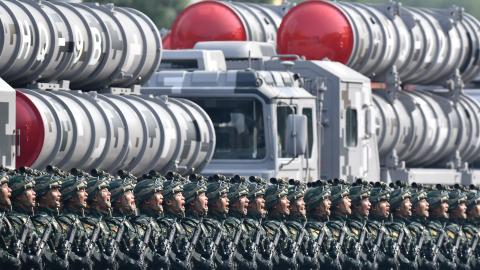Over the past decade, the prospect of Chinese military aggression in the Indo-Pacific has moved from the realm of the hypothetical to the war rooms of U.S. defense planners. Chinese leader Xi Jinping has significantly accelerated his country’s military buildup, now in its third decade. At the same time, China has become increasingly assertive across a wide swath of the Pacific, advancing its expansionist maritime claims and encroaching on the waters of key U.S. allies and important security partners, including Japan, the Philippines, and Taiwan. Xi has asserted, with growing frequency, that Taiwan must be reunited with China, and he has refused to renounce the use of force to achieve that end. With the United States distracted by major wars in Europe and the Middle East, some in Washington fear that Beijing may see an opportunity to realize some of these revisionist ambitions by launching a military operation before the West can react.
With Taiwan as the assumed flash point, U.S. strategists have offered several theories about how such an attack might play out. First is a “fait accompli” conquest of Taiwan by China, in which the People’s Liberation Army employs missiles and airstrikes against Taiwanese and nearby U.S. forces while jamming signals and communications and using cyberattacks to fracture their ability to coordinate the island’s defenses. If successful, these and other supporting actions could enable Chinese forces to quickly seize control. A second path envisions a U.S.-led coalition beating back China’s initial assault on the island. This rosy scenario finds the coalition employing mines, antiship cruise missiles, submarines, and underwater drones to deny the PLA control of the surrounding waters, which China would need in order to mount a successful invasion. Meanwhile, coalition air and missile defense forces would prevent China from providing the air cover needed to support the PLA’s assault, and electronic warfare and cyber-forces would frustrate the PLA’s efforts to control communications in and around the battlefield. In a best-case outcome, these strong defenses would cause China to cease its attack and seek peace.



















